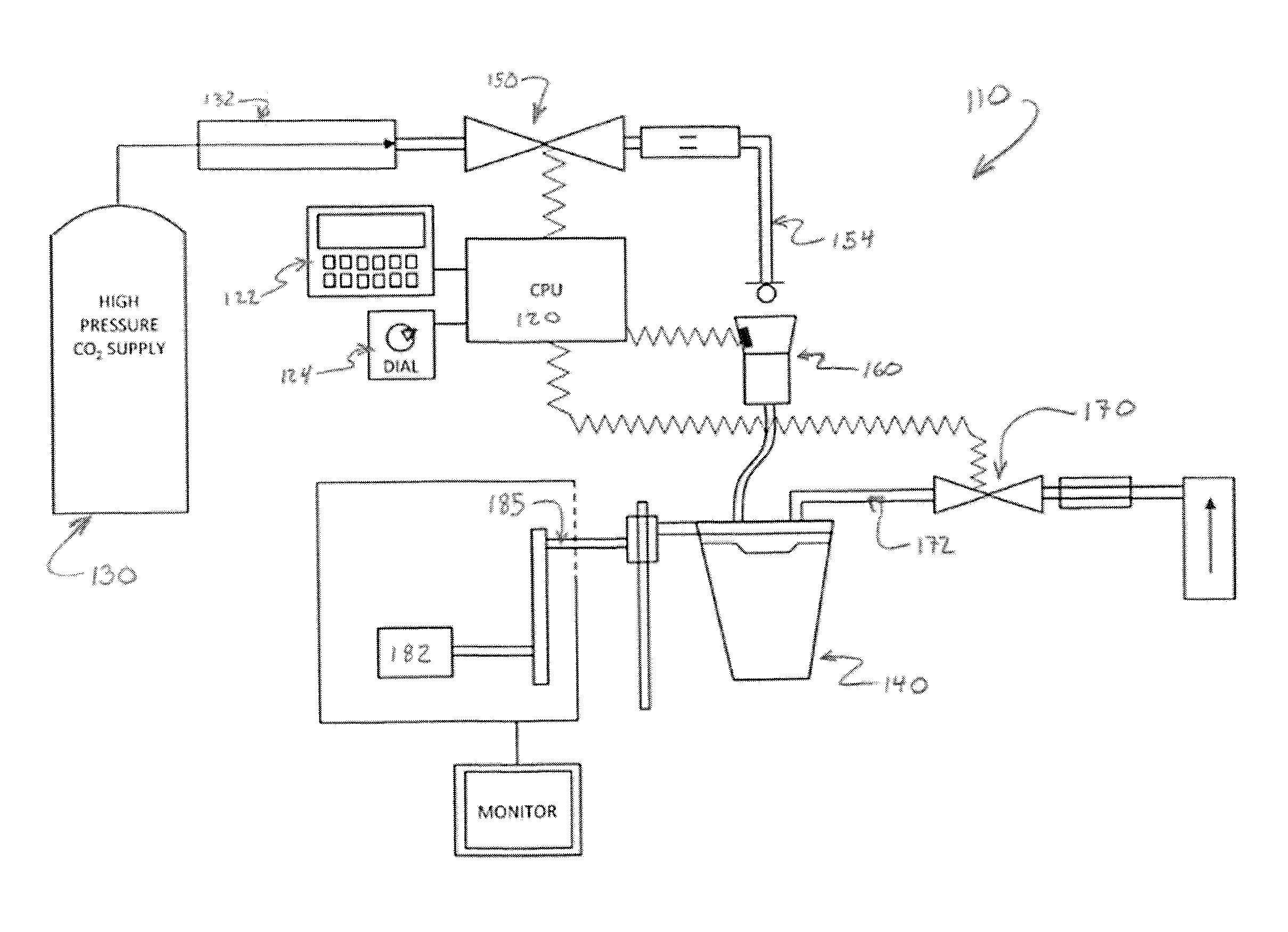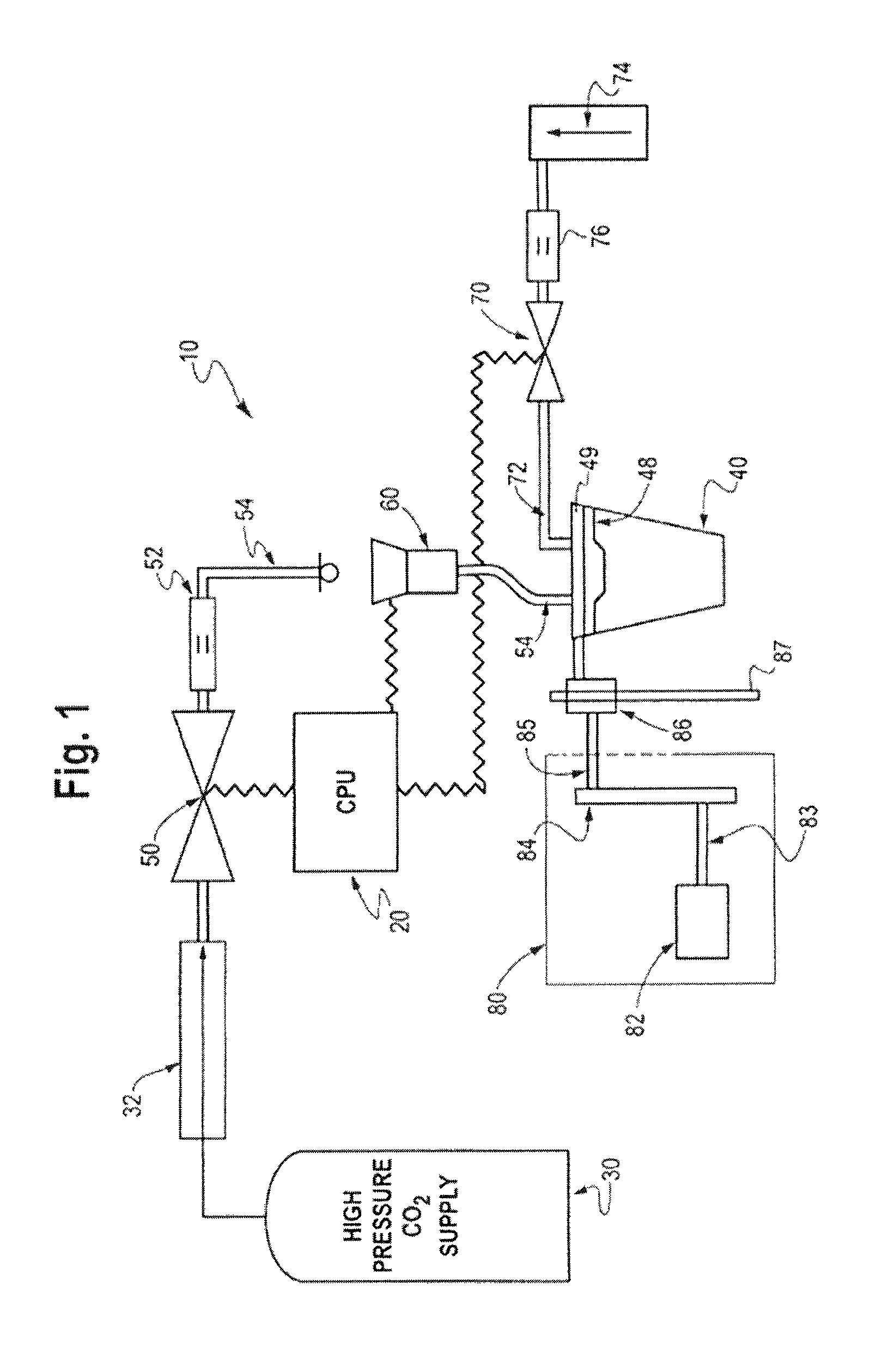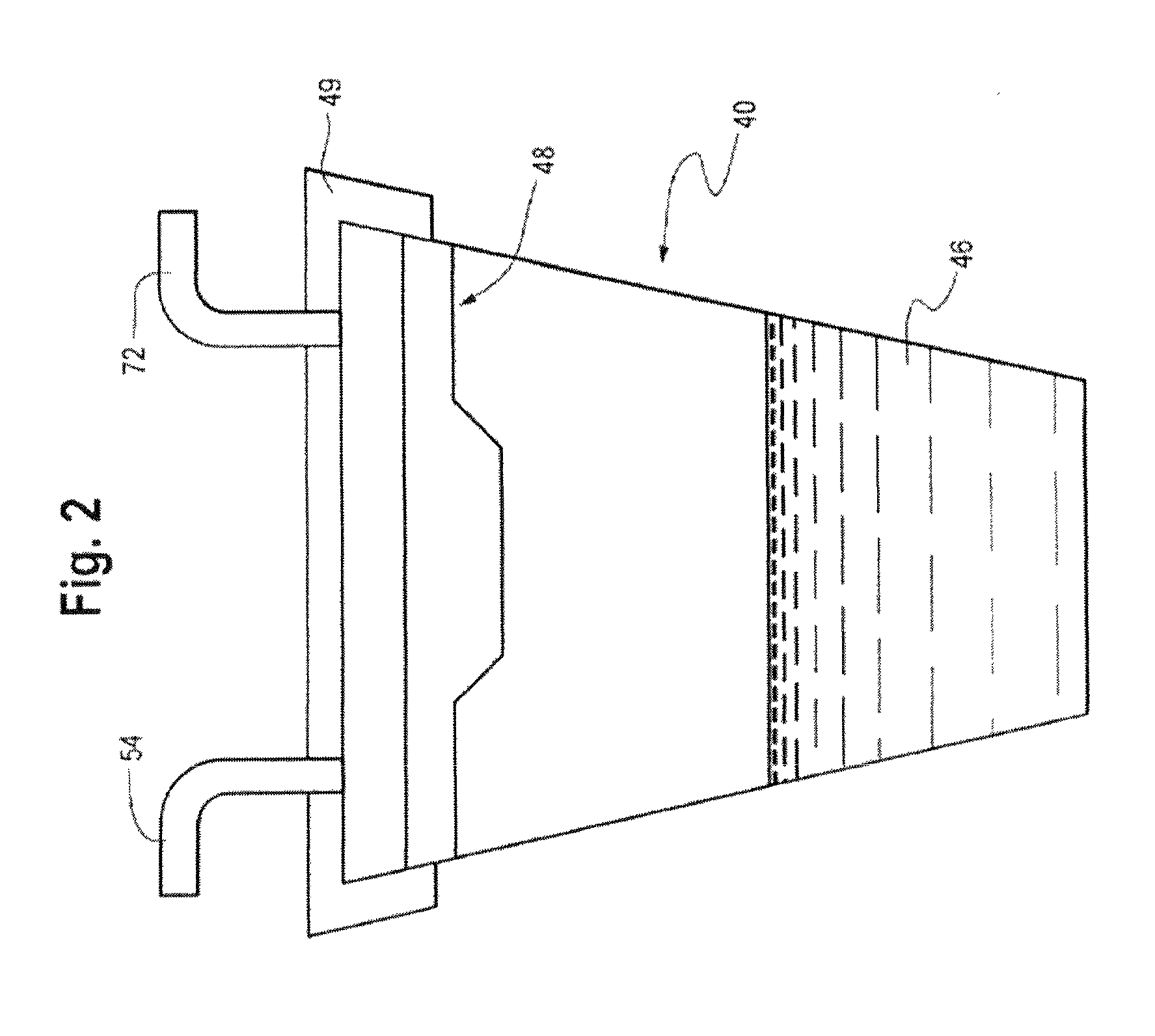Method for customizing a beverage's carbonation level
a technology of carbonation level and beverage, which is applied in the field of method and apparatus for carbonation of liquid, can solve the problems of increasing the manufacturing cost of beverage dispensing system, reducing and reducing the amount of carbonation prior to the invention of carbonation apparatus, so as to reduce the flow rate of pressurized carbon dioxide gas and increase the surface area of the conta
- Summary
- Abstract
- Description
- Claims
- Application Information
AI Technical Summary
Benefits of technology
Problems solved by technology
Method used
Image
Examples
Embodiment Construction
[0015]Carbonation is the process of dissolving carbon dioxide into a solution of water under pressure. It is commonly used in the creation of soft drinks, tonic water and other carbonated drinks. Effervescence is the escape of gas from an aqueous solution. In many consumer products, such as soft drinks, for example, Coca-Cola, 7-Up and Pepsi, carbonation (more particularly, the effervescence of the escaping gas) enhances the flavor of the beverage. Carbonated beverages contain dissolved carbon dioxide. The process of dissolving carbon dioxide (CO2) in water is called carbonation. Carbonation may occur naturally from fermentation or a mineral source. However, most carbonated soft drinks are carbonated utilizing carbon dioxide which is artificially added to the beverage. Artificial carbonation is typically performed by dissolving carbon dioxide under pressure into a liquid.
[0016]This invention can be used for carbonation of a liquid inside a vessel. The liquid is not carbonated when i...
PUM
 Login to View More
Login to View More Abstract
Description
Claims
Application Information
 Login to View More
Login to View More - R&D
- Intellectual Property
- Life Sciences
- Materials
- Tech Scout
- Unparalleled Data Quality
- Higher Quality Content
- 60% Fewer Hallucinations
Browse by: Latest US Patents, China's latest patents, Technical Efficacy Thesaurus, Application Domain, Technology Topic, Popular Technical Reports.
© 2025 PatSnap. All rights reserved.Legal|Privacy policy|Modern Slavery Act Transparency Statement|Sitemap|About US| Contact US: help@patsnap.com



